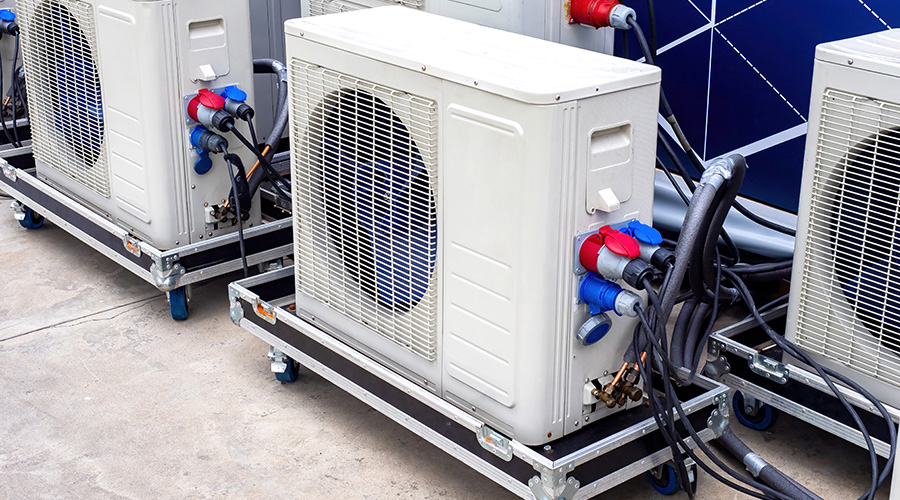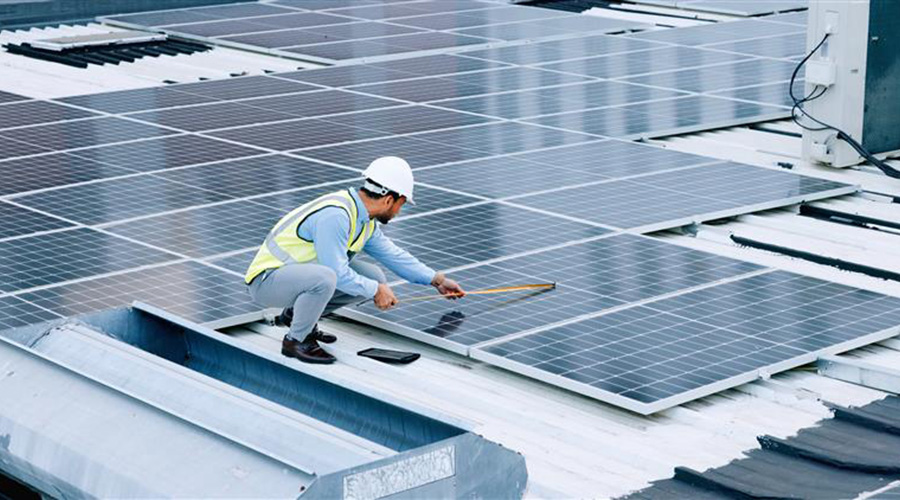Energy Recovery Is Becoming Common Way To Save On HVAC Costs
Energy recovery is an option to save on HVAC costs for organizations using a direct exchange system that's increasingly being written into building codes and ASHRAE standards.
Like VRF, there are two basic types: airside and waterside.
According to Ron Holdaway, an engineer at Smith Seckman Reid, airside energy recovery is the process of using the building's exhaust air to pre-condition the ventilation air for the building. The exhaust air passes through an energy recovery device such as a rotating heat wheel, a fixed plate heat exchanger, or a run-around coil. The energy from the exhaust air stream is transferred to or from the outside air. In the summer, the temperature of the warmer, humid outside air is reduced before entering the air conditioning system, which trims air conditioning system tonnage. In winter, the cold outside air is warmed before heaters heat the air to maintain the space temperature.
A water-cooled system relies on chillers to cool the water, which is then distributed to air-handling units to condition the space. The heat from the air-handler coils is returned to the chiller where it is returned to the air via fans or a cooling tower. Holdaway notes that waterside energy recovery systems capture some of the heat from the building before it is rejected. This recovered energy is often used to help provide the building's heating or hot water.
"Some form of water-side heat recovery is being used in most large buildings today," Holdaway says. "Best design practice today is to use dedicated heat recovery chillers to recover heat from building's return chilled water and produce heating and domestic hot water."
The results of such a set-up yield much higher efficiencies. If a typical high-efficiency gas boiler is 90 percent efficient, a dedicated heat recovery chiller is 300 percent efficient or greater to produce the same hot water, Holdaway notes.
Like VRF systems, energy recovery system installation requires the aid of an engineer who can calculate the energy savings against current building energy use. Holdaway notes that it's essential to size the systems appropriately.
"Systems that are oversized will not perform well and result in unnecessary added costs. Systems that are undersized do not generate sufficient energy savings to pay back the initial investment," he says.
Especially for buildings that are large energy consumers, energy-recovery systems have the potential to cut conditioning energy use by half.
Holdaway cites an airside heat recovery system that was recently designed for a 200,000-square-foot hospital in the Memphis area. Hospitals require significant amounts of outside air to ensure proper control of microorganisms.
"By using heat-recovery systems, the air conditioning tonnage was reduced by over 200 tons," Holdaway notes. "The system also resulted in improved indoor air quality by improved temperature and humidity control in the space." Payback is anticipated to be four years or less.
Increasingly, these systems are required. For commercial buildings, airside and waterside heat recovery are required by ASHRAE 90.1-2010 and the International Energy Conservation Code (IECC). Holdaway notes that exhaust air energy recovery is required if the outside air exceeds a prescriptive quantity, dependent on the climate zone of the building.
Energy recovery in buildings today is a true paradigm shift from traditional practice of 20-30 years ago, because the technology to accomplish it didn't exist.
"It is now commonplace to expect some type of energy recovery incorporated into the building's HVAC system," Holdaway says. "Rather than throwing away the low grade energy generated in the building, technology today allows the energy to be recovered in efficient and practical ways."
Loren Snyder, a contributing editor for Building Operating Management, is a writer who specializes in facility issues. He was formerly managing editor of Building Operating Management.
Related Topics:













